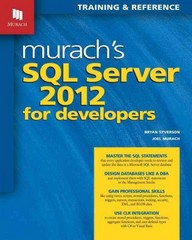Answered step by step
Verified Expert Solution
Question
1 Approved Answer
1 ) In general terms what are four distinct actions that a machine instruction can specify? 2 0 % Fetch Grab code for the machine
In general terms what are four distinct actions that a machine instruction can specify?
Fetch Grab code for the machine to analyze
Decode translate human code to machine code and decide what needs to be done
Execute after deciding what needs to be done, set the plan into motion execute
Store Hold the address of the next instruction or wait
Why was the evolution of operating systems to use interrupts important be specific? Give examples of interrupts
Operating systems slowly evolved over time. From having to work with bare hardware and referencing one person for each application to having an OS to manage all of the obscure systems at once. As processes slowly became more and more tedious and plentiful, interrupts came into the picture. Without interrupts the CPU would work in an inefficent manner constantly waiting for input from an external source and slowly down its processes. Now when a signal from an external device is sent, the CPU is interrupted and can handle the abrupt interruption instead of wasting effort waiting for a signal that may never come.
IE: Anytime I press or use my keyboard the CPU must divert its attention to figure out where am I currently placing the key if anywhere and how to process the request I am giving it
What are the basic functions of an operating system?
What does each do
Memory management decide when and how to allocate memory and to what processes
Processor management allocate processes
Device management: Track and manage devices that connect to a system
File Management: Track and manage files in a systemcontrol where information is stored
Security: Prevent unauthorized users from gaining access to a systemprograms
Control System Performance: Monitor and control resource usage
Detect Errors: Keep an eye on the overall system for any errors that may occur
What are the differences between user mode and kernel mode?
Kernal mode allows code to be executed unrestricted unlike user mode
No limitations on what kind of memory addresses can be referenced
It is a mode reserved for the most trusted functions
User mode
User has to program execute
User may not have access ot be blocked from certain areas of memory
May not be able to execute all instructions
Why multiprogramming better than uniprogramming?
Uniprogramming means the process of running only one program at a time, while in comparison, Multiprogramming means running multiple programs at once alongside having usually better user performance
Step by Step Solution
There are 3 Steps involved in it
Step: 1

Get Instant Access to Expert-Tailored Solutions
See step-by-step solutions with expert insights and AI powered tools for academic success
Step: 2

Step: 3

Ace Your Homework with AI
Get the answers you need in no time with our AI-driven, step-by-step assistance
Get Started


